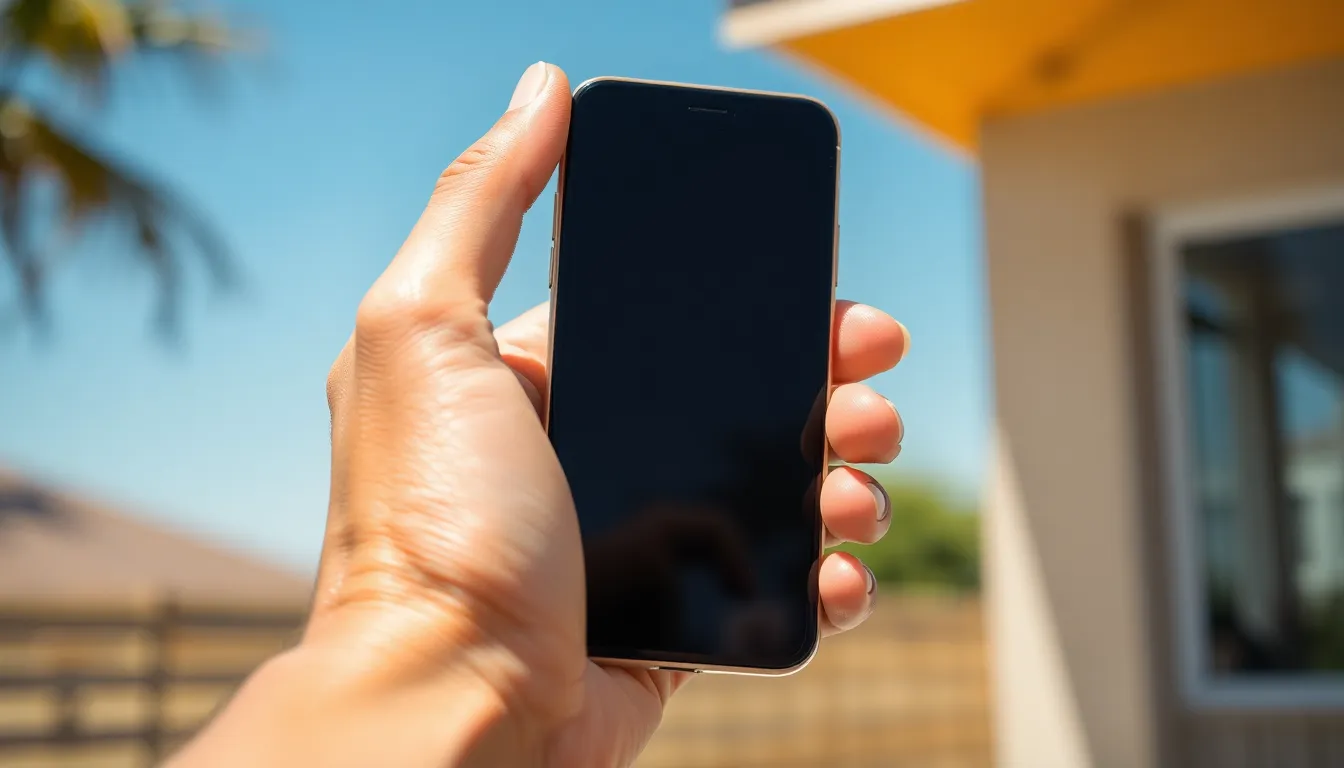Is your iPhone feeling more like a hot potato than a handy gadget? You’re not alone. Many users find themselves wondering why their beloved devices seem to be auditioning for a role in a summer blockbuster. The truth is, a hot iPhone can be a sign of various issues, from demanding apps to that sneaky little feature called background activity.
Table of Contents
ToggleCommon Causes of iPhone Overheating
Overheating in iPhones often stems from multiple factors. Understanding these causes helps manage device temperature.
Background App Activity
Background app activity can significantly contribute to overheating. Apps running in the background continuously consume resources, leading to increased heat generation. Frequent location tracking by navigation and fitness apps intensifies this issue. Notifications from social media platforms often cause apps to refresh, adding to the workload. Regularly closing unused applications enhances device performance and reduces heat levels.
Environmental Factors
Environmental factors also play a crucial role in device temperature. Exposure to direct sunlight can cause an iPhone to heat up quickly, especially during summer months. High ambient temperatures affect the phone’s ability to dissipate heat. Leaving devices in hot cars or near heat sources triggers temperature warnings. Keeping the iPhone in a case that insulates heat further exacerbates the situation. Using the device in less-than-ideal environments results in elevated temperatures.
Troubleshooting Steps

Overheating issues can often be resolved with simple troubleshooting steps. Take these measures to help cool down your iPhone.
Restarting Your iPhone
Restarting the device frequently resolves various technical glitches. To do this, press and hold the side button along with the volume button until the slider appears. Sliding to power off can help reset any apps causing excessive heat. After a brief pause, turn the iPhone back on by pressing the side button again. A fresh start can often clear background processes that generate heat.
Checking for Software Updates
Keeping the software updated can significantly enhance device performance. Go to Settings, then select General and tap on Software Update. If an update is available, install it. Updates often include fixes for bugs that may contribute to overheating. Ignoring these updates could leave the device vulnerable to performance issues, including overheating. Consistent software maintenance promotes an optimal user experience and device longevity.
Tips to Prevent Overheating
Taking steps to prevent overheating can enhance the iPhone’s performance and user experience. Implement the following strategies.
Managing App Usage
Limit the number of active apps running simultaneously. Background apps consume resources, which leads to increased heat generation. Regularly closing unused applications significantly reduces this workload. Monitor app permissions, especially for location services, as they often contribute to overheating. Turn off location tracking for apps that don’t require it. Consider using lightweight alternatives for resource-heavy applications. Limit the use of features like live wallpapers and animated widgets, which place additional strain on the device.
Optimal Charging Practices
Use the appropriate charger that matches your iPhone’s specifications. Fast charging can generate more heat, so opt for standard charging whenever possible. Avoid charging the device while it’s in direct sunlight or inside an insulated case, as this can trap heat. Don’t use the device extensively while charging; heavy app usage during this time causes additional heat. Disconnect the charger once the battery reaches 100 percent to prevent overheating. Aim for charging between 20% and 80% to prolong battery health and minimize thermal stress.
When to Seek Professional Help
Identifying when to seek professional help for an overheating iPhone is crucial. Users should observe specific signs indicating potential hardware issues and consider contacting Apple Support if necessary.
Signs of Hardware Issues
Unusual behavior typically indicates hardware problems. Users may notice persistent overheating even under normal conditions. Physical damage, such as cracks or water exposure, can also lead to increased temperatures. Battery swelling represents a serious concern, as it affects device functionality and safety. Frequent crashes or unexpected shutdowns further signal underlying issues that warrant inspection. Ultimately, ignoring these signs may lead to more extensive damage or compromised device performance.
Contacting Apple Support
Reaching out to Apple Support becomes essential when troubleshooting doesn’t resolve the overheating problem. Users can discuss their concerns with experts who provide tailored advice. Online chat, phone support, or in-person visits to the Apple Store offer various options for assistance. Documenting symptoms clearly ensures that representatives understand the situation better, facilitating quick resolutions. Checking warranty status can help determine coverage for repairs. Professionals can assess the device’s condition and recommend appropriate next steps.
Managing an iPhone’s temperature is crucial for maintaining its performance and longevity. By understanding the causes of overheating and implementing proactive measures users can significantly reduce the risk of their devices becoming too hot. Regular maintenance such as closing unused apps and monitoring environmental factors plays a key role in keeping the device cool.
When persistent overheating occurs despite following best practices it’s important to seek professional assistance. Identifying potential hardware issues early can prevent further damage and ensure the iPhone operates smoothly. Staying informed and taking action can lead to a better user experience and a healthier device overall.



